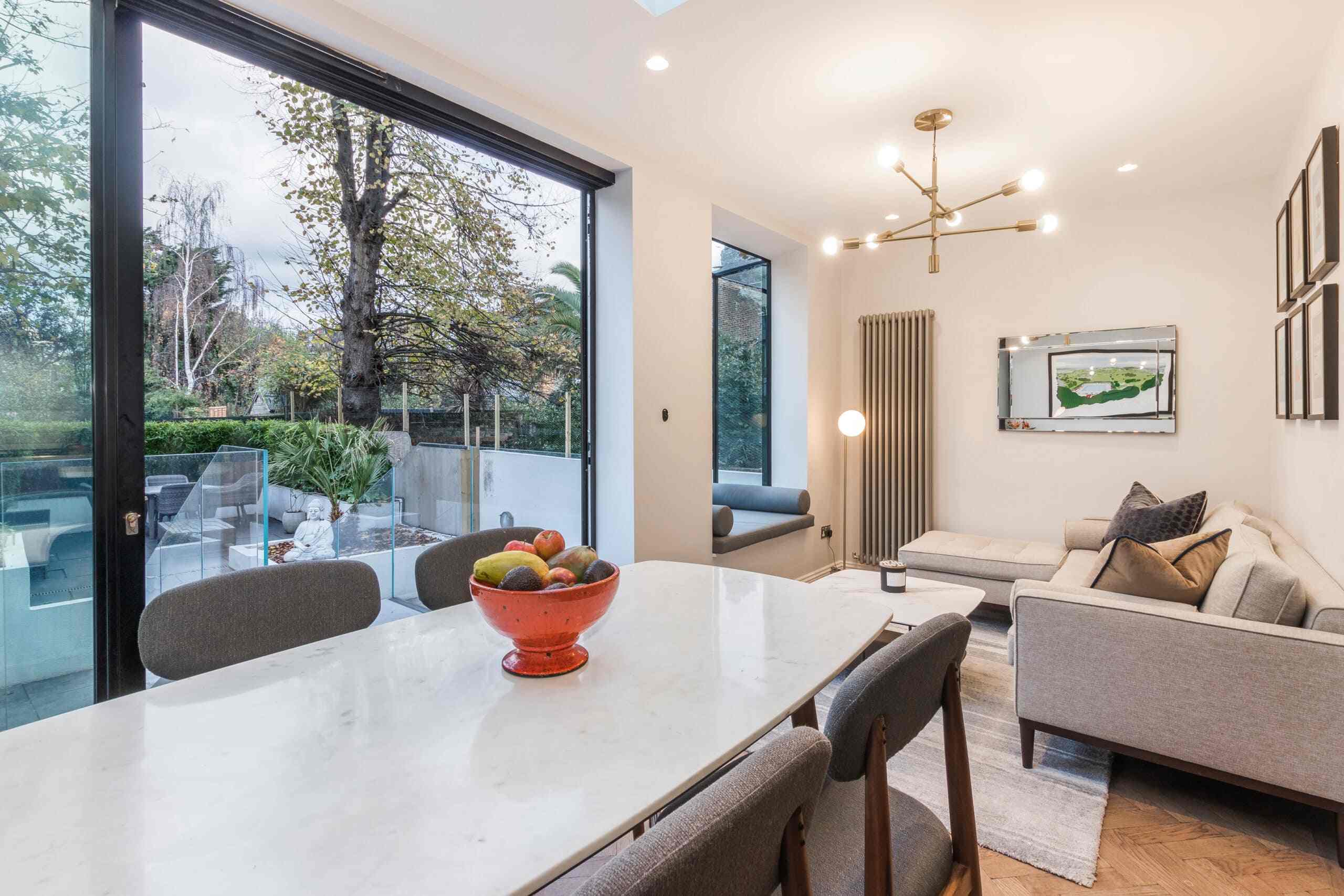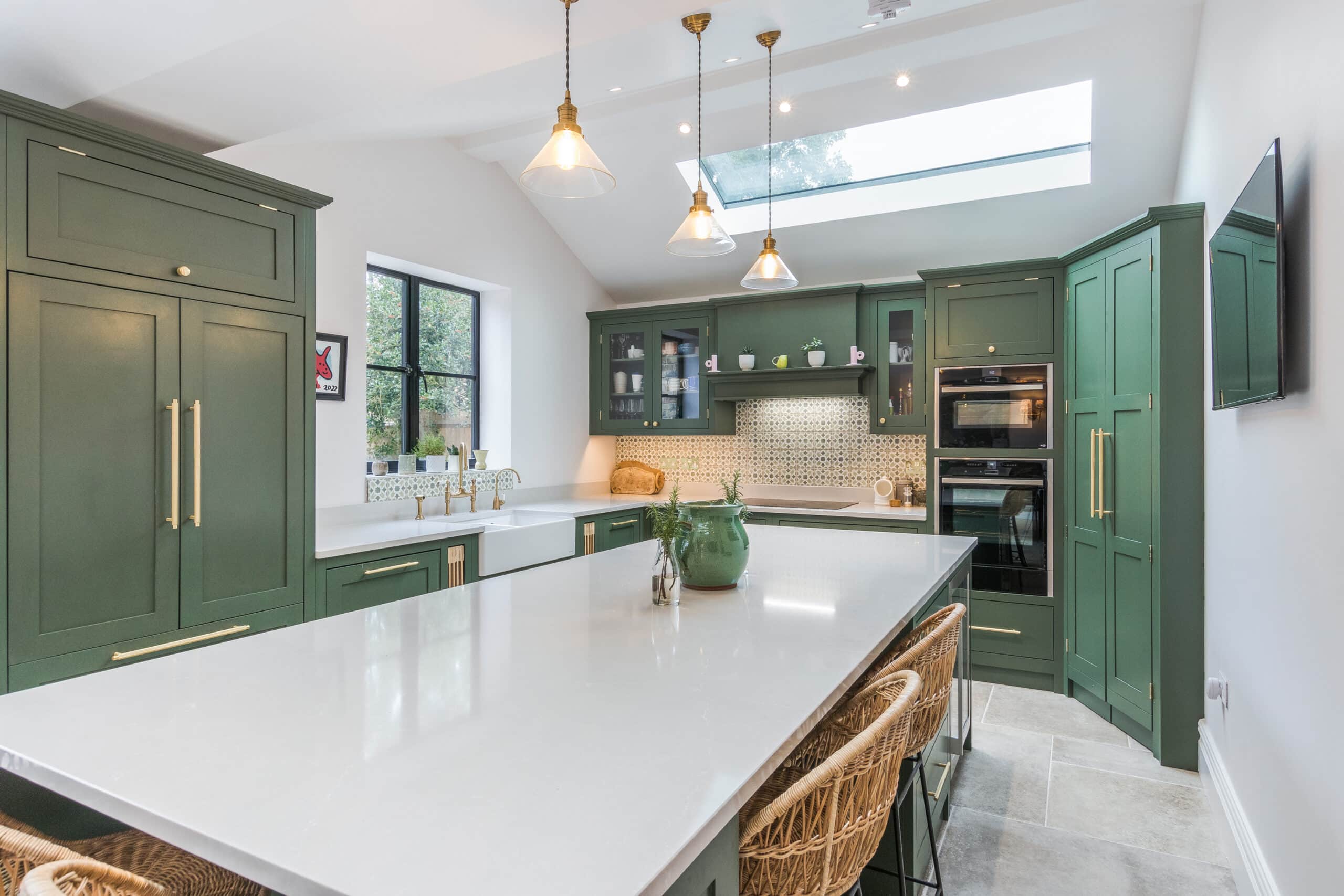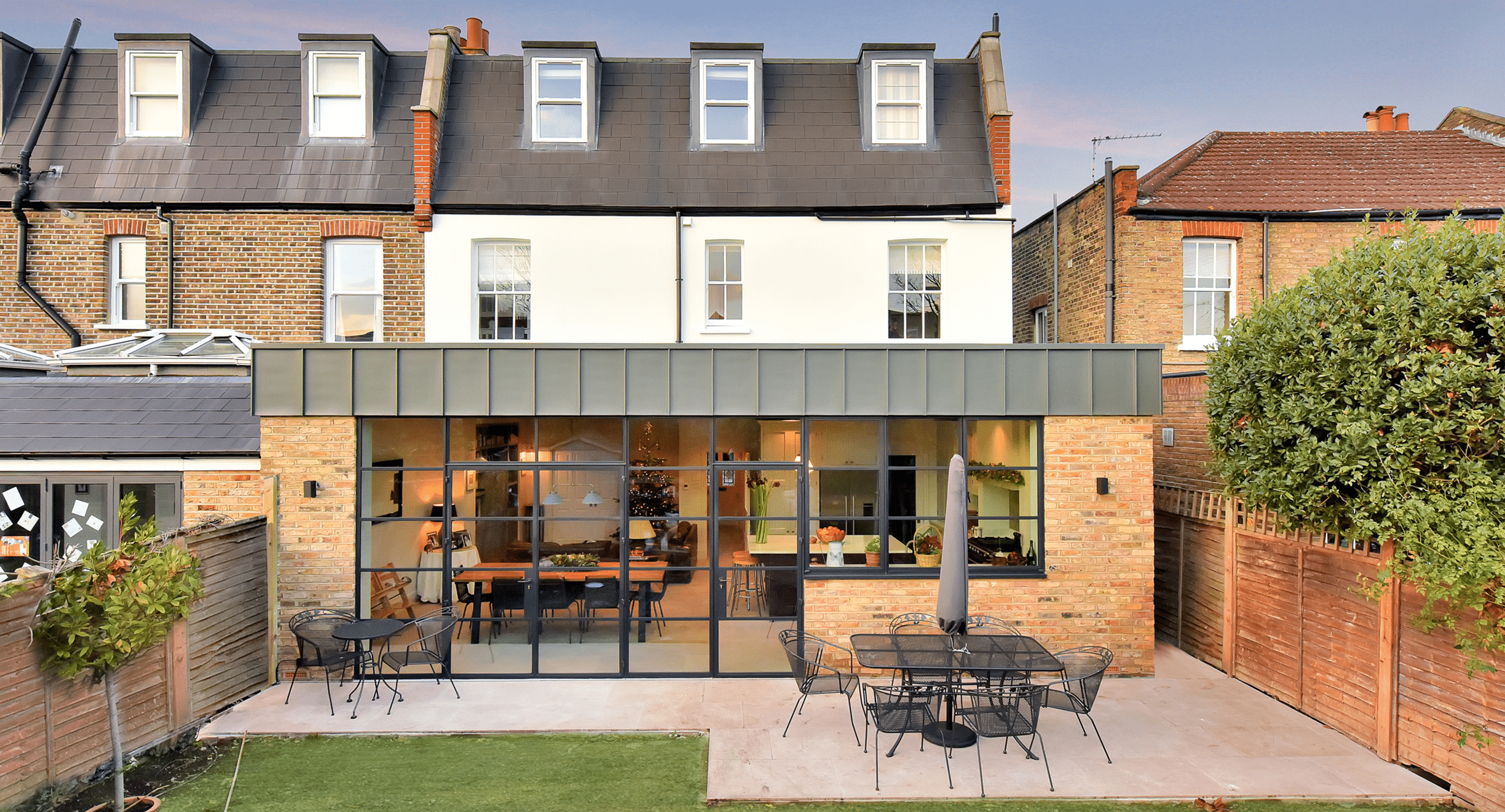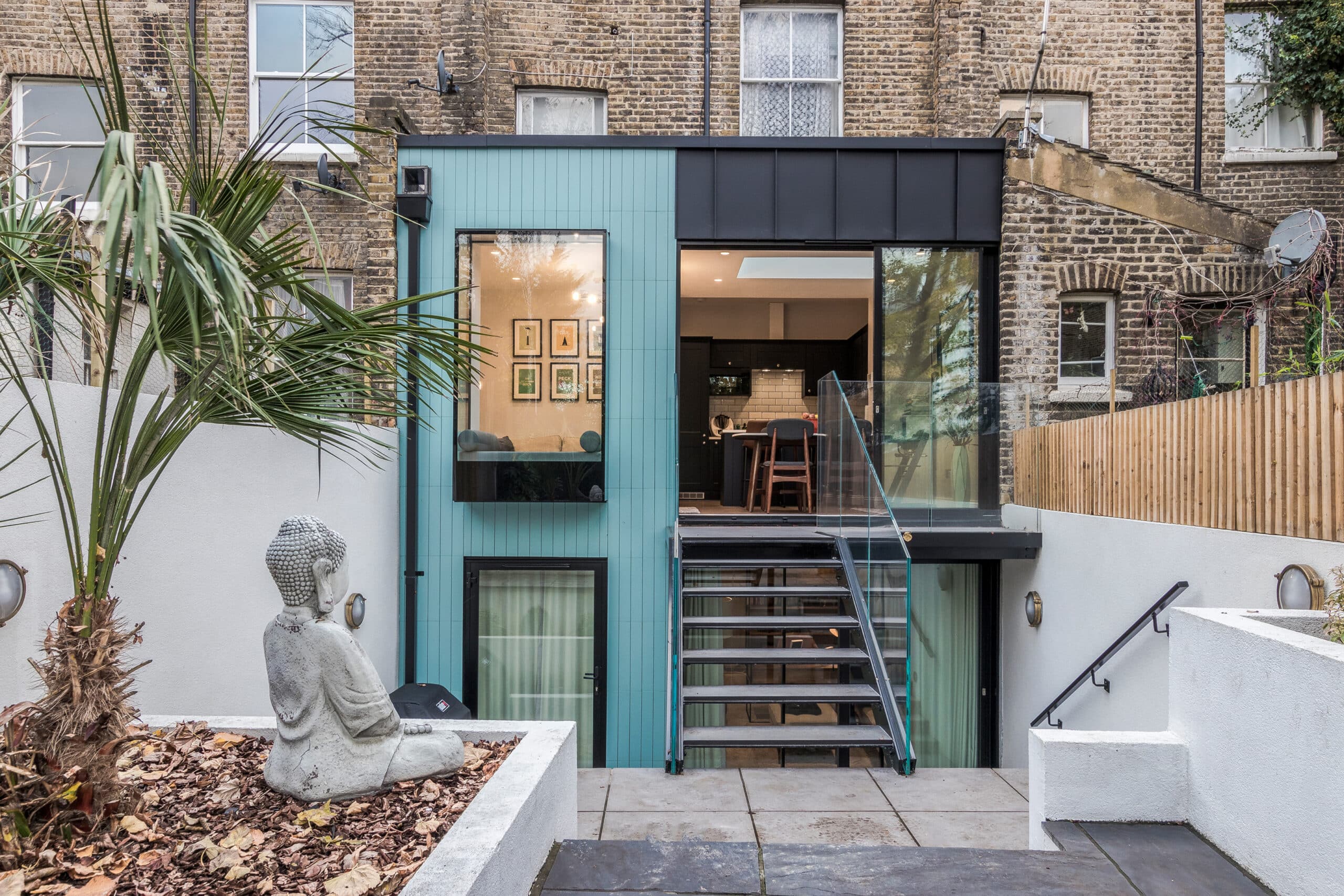
How to get your Lighting Design just right!
Pooky Lighting used in our Thrale Road project.
“So much more than just picking a good looking light fitting”
One common error that many people make is neglecting lighting design, often treating it as an afterthought in interior design and failing to allocate a sufficient budget and design time for it.
Although it may seem convenient to enhance an existing lighting setup with standalone lamps, the concepts behind your permanent lighting design can significantly influence both the functionality and ambiance of a room.
If you nail your lighting design, your home will transform into a cosy and practical haven once darkness descends. However, if you falter in this aspect, it can disrupt the entire atmosphere of the space.
Ever stopped to think about what makes that hotel room so welcoming, that restaurant so buzzing, or your favourite boutique feel so special? Interior designers put A LOT of art and science into their lighting schemes.
What's a good first step?
In most rooms, the ideal approach involves combining layers of light, using all three types to craft a well-rounded and functional lighting scheme:
- Ambient Lighting: This is also known as general or background lighting, providing overall illumination to a room, such as concepts for ceiling lighting. Examples include large pendants, recessed downlights, and even wall lights in some instances.
- Task Lighting: Task lighting offers targeted illumination to specific areas where daily activities like reading, cooking, and working occur. Floor lamps, table lamps, and desk lamps serve as great sources of task lighting. Additionally, certain features like cooker hood lights and vanity mirror lights can serve this purpose. Ceiling downlighters can also be considered task lighting since they serve a functional purpose rather than being purely ambient.
- Accent or Mood Lighting: This type of lighting is employed to accentuate objects or architectural elements you want to emphasize, such as artwork, cabinets, or sculptures. Examples include directional spots on tracks, low-level chandeliers, and recessed or concealed LED strips.
Modern LED technology and smart controls have taken our light design options and sustainability gains to a whole new level. Discussing your lifestyle and the potential of each room with your designer really helps to shape a lighting concept.

Where do I start?
Some individuals take on the task of designing their own lighting arrangements, however you can appoint a Lighting Designer or your Interior Designer will often do this as part of their scheme.
If you choose to do it yourself, it’s essential to start by evaluating the room’s purpose, size, and natural light levels. If you find yourself uncertain about tackling this task after the assessment, consider seeking assistance from professionals like an interior designer, an electrician, or a specialized lighting company.
A well-thought-out lighting plan has several benefits. It allows you to begin shopping for the appropriate fixtures early in the process and serves as a vital reference for your electrician, who needs to know the precise location and type of fittings and switches.
It’s advisable to initiate your lighting scheme planning concurrently with your plumbing plans. An effective lighting plan takes into account the diverse purposes of each room. For instance, your kitchen lighting requirements will differ significantly from those of a bedroom.
Start your planning systematically by “walking through” your plans or your house, particularly in the case of renovations. For each room, ask yourself the following questions:
What will this space be used for? Consider all potential uses. Could your kitchen serve as both a dining area and a homework space? Will a spare room also function as a study?
Are there any furniture pieces or architectural features you wish to emphasise? Whether it’s highlighting furniture or drawing attention to elements like fireplaces or artwork, this will determine your need for accent lighting.
Who will be using this room? Keep in mind that lighting requirements vary based on age, with older individuals needing significantly more light than children.
When will the room be used the most during the day? Adjust your lighting plan accordingly; for instance, if a room is primarily used in the evening for relaxation, dimmable lights are a practical choice.
Where does natural light enter the room and from which direction? Recognize that lighting is necessary not only at night but also during the day when natural light levels may be insufficient.
Once you have answers to these questions, create a room plan to identify the ideal positions for your lights. On this plan, mark permanent fixtures like windows, doors, alcoves, fireplaces, and heat sources such as radiators. Indicate the primary direction where room occupants will be facing, such as the TV, a desk, or the stove. Consider convenient locations for light switches, emphasizing doorways and stairwells. Finally, plan where major pieces of furniture, like beds and sofas, will be placed.
Utilise the insights gathered during your “walk around” to designate the placement of each light source, whether it’s a pendant, table lamp, or recessed downlighter.
Should I hire a Professional to help me instead?
As mentioned above, a Lighting Designer can be incredibly valuable, but most Interior Designers will also include a Lighting Design as part of their scheme.
When you’re remodelling a relatively standard house, you can often create an effective lighting plan without the assistance of a design professional, particularly in moderately sized rooms. However, if you’re embarking on a significant new extension project, seeking professional help to perfect your lighting scheme can be highly beneficial. In the case of a self-build project, it may even be essential.
A lighting designer can introduce various creative ideas you may not have considered, such as innovative staircase lighting concepts and smart lighting solutions.
There are numerous advantages to enlisting a lighting designer’s services, including:
Expertise in developing both simple and intricate lighting plans.
In-depth knowledge of lighting products and fixtures.
Consideration of factors like light colour, intensity, angle, shape, and shadow.
The ideal timing for hiring a Interior Designer can vary based on your project. For renovations, it’s advisable to bring a Interior Designer on board before rewiring to ensure the lights are correctly positioned. In the case of a self-build project, it may be beneficial to involve a Interior Designer early in the design brief phase.
Can we help you with your Interior Design project?
Check out our Interior Design page to see how we can help you!
Click hereAre there any Building Regulations relating to Lighting Design?
Incorporating energy-efficient lighting in a new home is now a mandatory requirement outlined in building regulations. These regulations stipulate that at least 75 percent of the lighting in a new residence must be classified as ‘energy efficient.’
To meet this requirement, light fixtures must meet specific criteria, including generating a combined minimum of 400 lumens, achieving a minimum efficacy of 45 lumens per watt, and consuming over 5 circuit watts. Light fittings under 5 watts are not counted toward the overall total, nor is any exterior lighting.
Examples of lighting options that meet these criteria include fluorescent and compact fluorescent lamps (CFLs), LEDs, or discharge lamps. However, fitting low-energy bulbs with bayonet or screw-cap bases does not fulfill these requirements.


What Lighting Suppliers should I use?
We use a variety of lighting companies on our project, selected to suit the client’s budget, project and requirements. We also like to use UK suppliers, where we can hand pick fixtures and fittings from their showrooms so we can ensure that they will be perfect for our client’s home.
One of our most popular suppliers are a lighting company based in the UK and have a showroom in Chelsea, called Pooky, a supplier of designer lamps and lampshades which are classic, beautiful and reasonably priced. We used them on our Thrale Road project, a few more recent ones which we’ll be live on the website soon!
If you have a project you’d like us to help with, we’d love to hear from you! Visit our contact us page or give us a call on 0203 189 1619.



